Crocodile leather
Contents
Crocodile leather
Crocodiles are reptiles and have a firm skin with a dandruff armor. There are about 25 species found in Central America, Africa and from India to Australia. Crocodiles live in fresh and salt water (Australia and Southeast Asia).
Subspecies of crocodiles are the alligators. Among the subspecies of the aligatiores are the caimans. Alligators exist in America and China. There are caimans in South America up to Central America.
Crocodile leather, as well as caiman leather and alligator leather is used for bags, shoes or belts.
Cayman from the Pantanal in https://www.youtube.com/watch?v=HVouUuG3afs&t Brazil].
The skin of crocodiles, which are processed into leather, comes from breeding farms. These are found in the countries where crocodiles also occur naturally. These are Australia, Southeast Asia, Africa, and Central and South America in the Amazon Basin region. The parks earn their money as a tourist attraction, with the tasty meat of the crocodiles and the skin. At the Darwin Crocodile Farm in Australia over 70 thousand crocodiles are held and the leather goes to the luxury companies of this world such as Louis Vuitton and Hermes.
From crocodiles, the belly side and only skins of younger animals are usually used for leather. The back skin is too hard because of the armor, especially of the older animals. This is also a reason for the high price of such leather. Also expensive is that the animals are in most cases only kept to get the skin. Therefore, the leather of these animals must bear the cost of breeding.
Belly side of a caiman.
Back side, seen in the DLM - German Leather Museum in Offenbach.
Nowadays only leather of breeding animals is processed according to strict regulations (CITES - Convention on International Trade in Endangered Species of wild fauna and flora). Nevertheless, this use is considered as critically from organizations such as PETA.
Crocodile leather is calculated according to the length (inches). 1 inch = 2.54 cm. Usually hides between 28 and 35 cm width are offered.
Crocodile leather back.
A duller version of crocodile leather.
Folder of crocodile leather back of 1958 - inside - outside - close-up.
Leather handbag made of corcodile back. The armor is very distinctive.
Leather bag made of crocodile back, probably from 1890.
Old leather luggage wit crocodile back.
Leather luggage and leather handbag made of crocodile leather from Sams & Son in Germany.
Leather handbag with polished armor (also known from stingray leather (www.pfeiffer-leder-mode.de).
Bei glanzgestoßenen Krokodilledern wird der Glanz durch Stoßen der Oberfläche erreicht.
Sofa aus Krokodilleder. Verkaufspreis des Sofas 30 Tsd. € April 2011 und 40 Tsd. Euro April 2013.
Schuhe und Stiefel aus Krokodilleder - Schuh aus Kaimanleder von Himer Maßschuhe.
Motorradsattel aus Krokoleder.
Ausgestopftes, junges Krokodil.
Eine ungewöhnliche Krokohandtasche - das ganze Tier wurde verarbeitet
Handtasche mit Krokodilkopf auf der Vorderseite.
Krokokopf auf Handtasche gesehen im DLM - German Leather Museum in Offenbach. - Alligatorkopf auf Handtasche aus den 50iger Jahren.
Gürteltasche aus Kroko-Pranke (Goldpfeil 1954). - Handtaschengriffe aus Krokofüßen gesehen im DLM - German Leather Museum in Offenbach.
Bei dieser Kroko-Tasche scheint der Kopf nicht aus Leder vom Kopf des Krokodils zu sein. Es ist vermutlich echtes Krokodilleder, aber nicht von der Kopfpartie.
Krokodilleder als Teppich - Nahaufnahme.
Krokodilfleisch ist hell, zart und schmeckt ähnlich wie Hähnchenfleisch.
Geprägtes Rindsleder
Rindsleder mit croc embossed. - Prägung vom Rücken.
Cowhide croc embossed in a Oldtimer.
Nähte mit Krokoptik
Erzeugung einer Kroko-Rücken-Optik durch Nähte.
Kunstleder
Croc embossed Kunstleder.
Similar leather of other animal species
Das Leder vom Straußenbein, von Hühnerbeinen und vom Biberschwanz haben die Optik vom Krokoleder. Biberschwänze waren in Zeiten, wo Biber noch viel gejagt werden dürfen, der preiswerte Ersatz für Krokoleder.
Straußenbeine, Hühnerbeine und Biberschwänze können mit Krokoleder verwechselt werden.
Video about leather of different animal species
Leather of different animal species - Exotic leather
Additional information
- Exotic leather
- CITES - Convention on International Trade in Endangered Species of wild fauna and flora
- PeTA - Critical consideration of leather production
Other exotic leather
- Alligator leather
- Alpaca fur
- Antelope leather
- Armadillo leather
- Bird leather
- Bull testicles
- Caiman leather
- Camel leather
- Carpincho leather
- Cat fur
- Chicken leather
- Dog leather
- Donkey leather
- Elephant leather
- Fish leather: Eel, shark, salmon, moray eel, stingray and many others
- Frog leather - Toad leather
- Giraffe leather
- Hippo Leather
- Horsehide - Horse leather
- Kangaroo leather
- Llama Fur
- Lizard leather
- Ostrich leather
- Pangolin leather
- Peccary leather
- Rumen leather
- Sealskin leather
- Snakeskin
- Turtle skin
- Walrus leather
- Yak leather
- Zebra hide







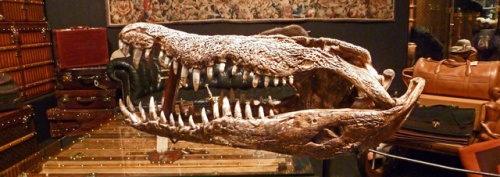

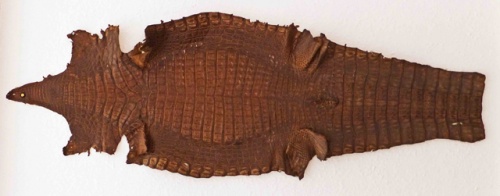
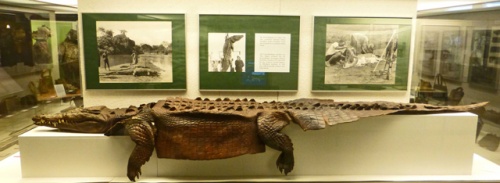
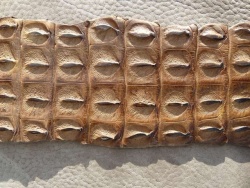
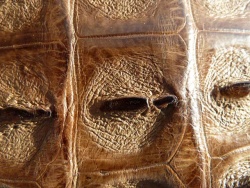
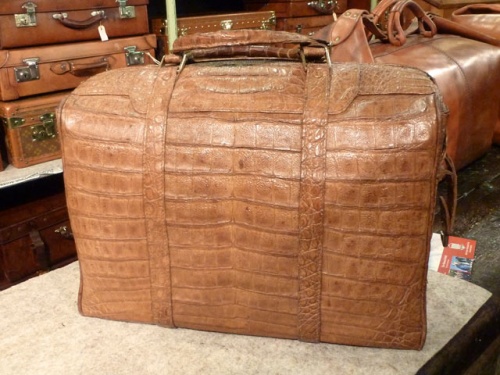
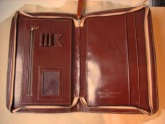
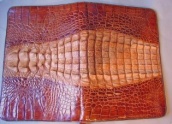
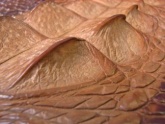
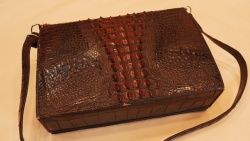
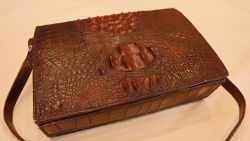
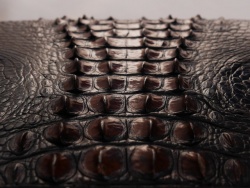
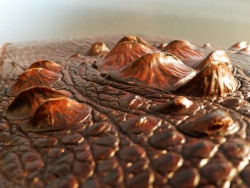
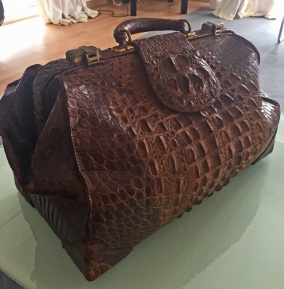
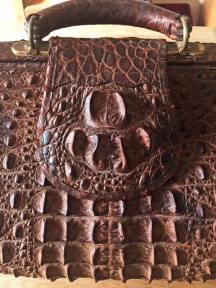
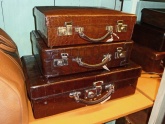
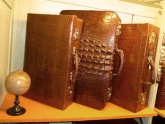
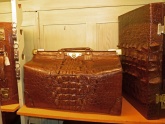
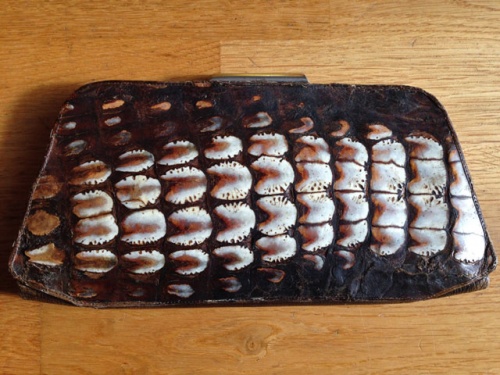
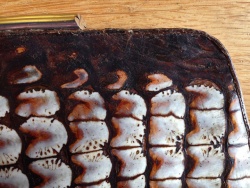
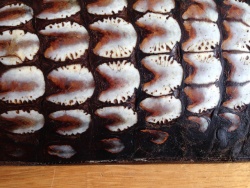
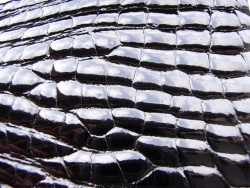
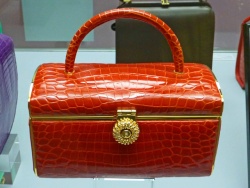
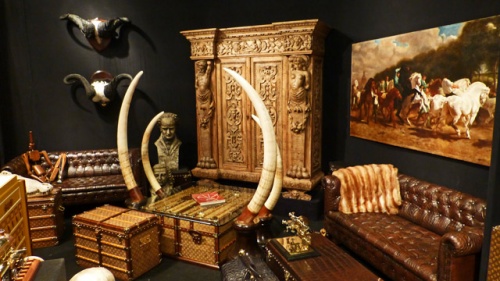
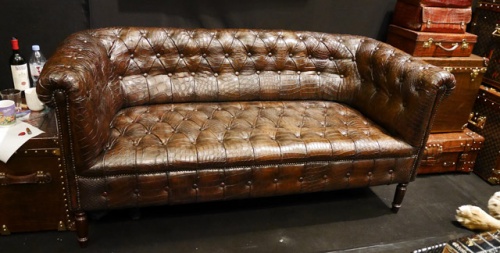
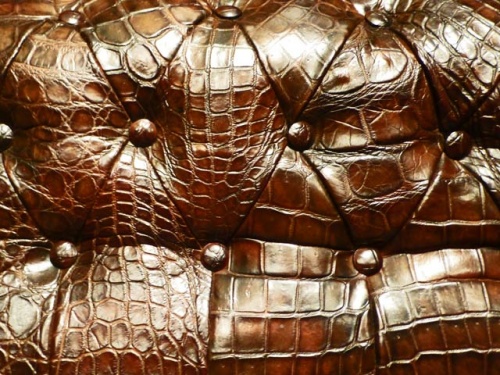
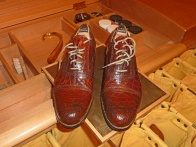
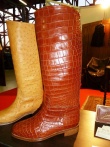
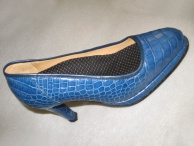
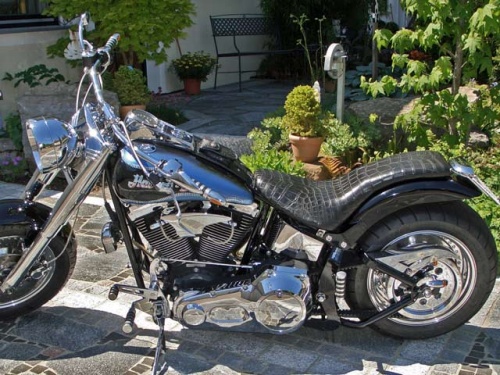
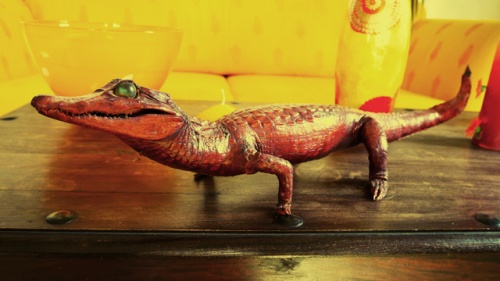
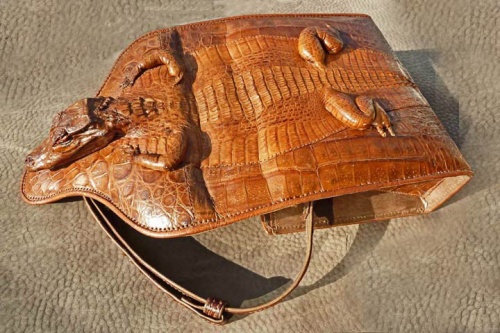
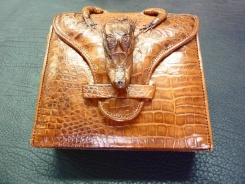
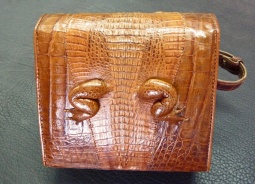
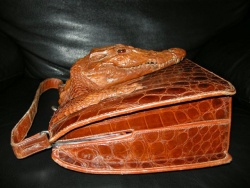
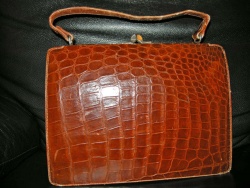
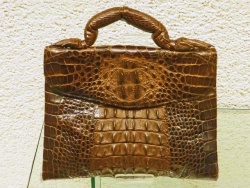
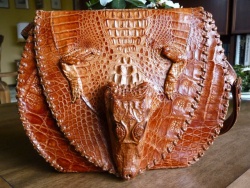
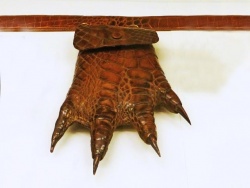
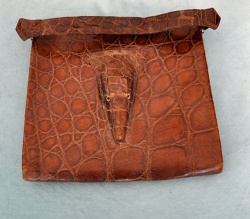
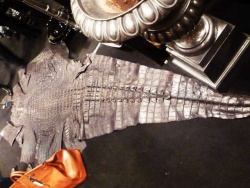
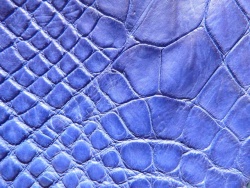
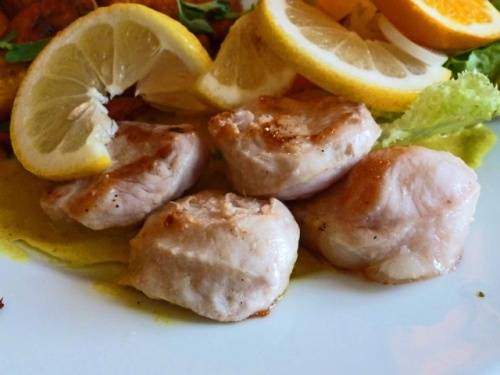
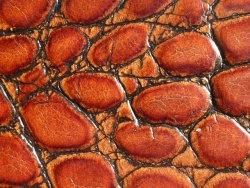
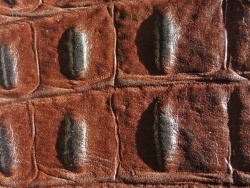
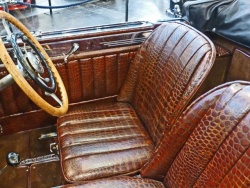
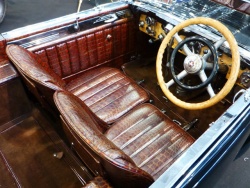
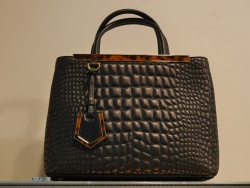
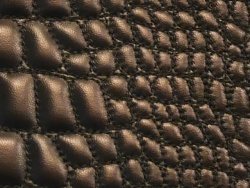
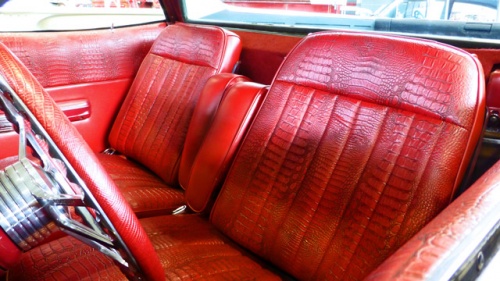
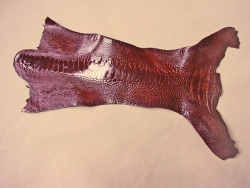
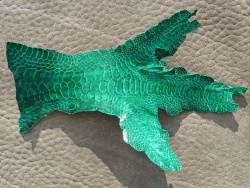
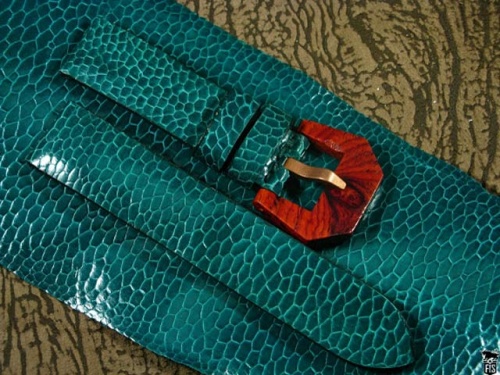

 a kotori web solution
a kotori web solution